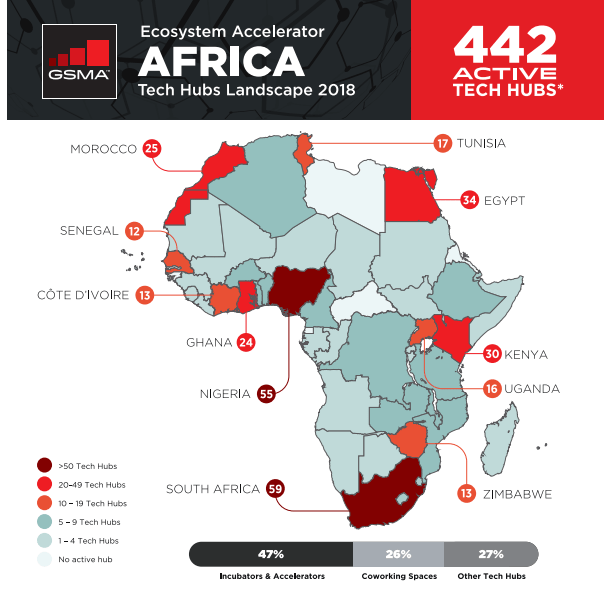How much value do online publishers derive from behaviorally targeted advertising that uses privacy-hostile tracking technologies to determine which advert to show a website user?
A new piece of research suggests publishers make just 4% more vs if they were to serve a non-targeted ad.
It’s a finding that sheds suggestive light on why so many newsroom budgets are shrinking and journalists finding themselves out of work — even as adtech giants continue stuffing their coffers with massive profits.
Visit the average news website lousy with third party cookies (yes, we know, it’s true of TC too) and you’d be forgiven for thinking the publisher is also getting fat profits from the data creamed off their users as they plug into programmatic ad systems that trade info on Internet users’ browsing habits to determine the ad which gets displayed.
Yet while the online ad market is massive and growing — $88BN in revenues in the US in 2017, per IAB data, a 21% year-on-year increase — publishers are not the entities getting filthy rich off of their own content.
On the contrary, research in recent years has suggested that a large proportion of publishers are being squeezed by digital display advertising economics, with some 40% reporting either stagnant or shrinking ad revenue, per a 2015 Econsultancy study. (Hence, we can posit, the rise in publishers branching into subscriptions — TC’s own offering can be found here: Extra Crunch).
The lion’s share of value being created by digital advertising ends up in the coffers of adtech giants, Google and Facebook. Aka the adtech duopoly. In the US, the pair account for around 60% of digital ad market spending, per eMarketer — or circa $76.57BN.
Their annual revenues have mirrored overall growth in digital ad spend — rising from $74.9BN to $136.8BN, between 2015 and 2018, in the case of Google’s parent Alphabet; and $17.9BN to $55.8BN for Facebook. (While US online ad spend stepped up from $59.6BN to $88BN between 2015 and 2017.)
eMarketer projects 2019 will mark the first decline in the duopoly’s collective share. But not because publishers’ fortunes are suddenly set for a bonanza turnaround. Rather another tech giant — Amazon — has been growing its share of the digital ad market, and is expected to make what eMarketer dubs the start of “a small dent in the duopoly”.
Behavioral advertising — aka targeted ads — has come to dominate the online ad market, fuelled by platform dynamics encouraging a proliferation of tracking technologies and techniques in the unregulated background. And by, it seems, greater effectiveness from the perspective of online advertisers, as the paper notes. (“Despite measurement and attribution challenges… many studies seem to concur that targeted advertising is beneficial and effective for advertising firms.”)
This has had the effect of squeezing out non-targeted display ads, such as those that rely on contextual factors to select the ad — e.g. the content being viewed, device type or location.
The latter are now the exception; a fall-back such as for when cookies have been blocked. (Albeit, one that veteran pro-privacy search engine, DuckDuckGo, has nonetheless turned into a profitable contextual ad business).
One 2017 study by IHS Markit, suggested that 86% of programmatic advertising in Europe was using behavioural data. While even a quarter (24%) of non-programmatic advertising was found to be using behavioural data, per its model.
“In 2016, 90% of the digital display advertising market growth came from formats and processes that use behavioural data,” it observed, projecting growth of 106% for behaviourally targeted advertising between 2016 and 2020, and a decline of 63.6% for forms of digital advertising that don’t use such data.
The economic incentives to push behavioral advertising vs non-targeted ads look clear for dominant platforms that rely on amassing scale — across advertisers, other people’s eyeballs, content and behavioral data — to extract value from the Internet’s dispersed and diverse audience.
But the incentives for content producers to subject themselves — and their engaged communities of users — to these privacy-hostile economies of scale look a whole lot more fuzzy.
Concern about potential imbalances in the online ad market is also leading policymakers and regulators on both sides of the Atlantic to question the opacity of the market — and call for greater transparency.
A price on people tracking’s head
The new research, which will be presented at the Workshop on the Economics of Information Security conference in Boston next week, aims to contribute a new piece to this digital ad revenue puzzle by trying to quantify the value to a single publisher of choosing ads that are behaviorally targeted vs those that aren’t.
We’ve flagged the research before — when the findings were cited by one of the academics involved in the study at an FTC hearing — but the full paper has now been published.
It’s called Online Tracking and Publishers’ Revenues: An Empirical Analysis, and is co-authored by three academics: Veronica Marotta, an assistant professor in information and decision sciences at the Carlson School of Management, University of Minnesota; Vibhanshu Abhishek, associate professor of information systems at the Paul Merage School of Business, University California Irvine; and Alessandro Acquisti, professor of IT and public policy at Carnegie Mellon University.
“While the impact of targeted advertising on advertisers’ campaign effectiveness has been vastly documented, much less is known about the value generated by online tracking and targeting technologies for publishers – the websites that sell ad spaces,” the researchers write. “In fact, the conventional wisdom that publishers benefit too from behaviorally targeted advertising has rarely been scrutinized in academic studies.”
“As we briefly mention in the paper, notwithstanding claims about the shared benefits of online tracking and behaviorally targeting for multiple stakeholders (merchants, publishers, consumers, intermediaries…), there is a surprising paucity of empirical estimates of economic outcomes from independent researchers,” Acquisti also tells us.
“In fact, most of the estimates focus on the advertisers’ side of the market (for instance, there have been quite a few studies estimating the increase in click-through or conversion rates associated with targeted ads); much less is known about the publishers’ side of the market. So, going into the study, we were genuinely curious about what we may find, as there was little in terms of data that could anchor our predictions.
“We did have theoretical bases to make possible predictions, but those predictions could be quite antithetical. Under one story, targeting increases the value of the audience, which increases advertisers’ bids, which increases publishers’ revenues; under a different story, targeting decreases the ‘pool’ of audience interested in an ad, which decreases competition to display ads, which reduces advertisers’ bids, eventually reducing publishers’ revenues.”
For the study the researchers were provided with a data-set comprising “millions” of display ad transactions completed in a week across multiple online outlets owned by a single (unidentified) large publisher which operates websites in a range of verticals such as news, entertainment and fashion.
The data-set also included whether or not the site visitor’s cookie ID is available — enabling analysis of the price difference between behaviorally targeted and non-targeted ads. (The researchers used a statistical mechanism to control for systematic differences between users who impede cookies.)
As noted above, the top-line finding is only a very small gain for the publisher whose data they were analyzing — of around 4%. Or an average increase of $0.00008 per advertisement.
It’s a finding that contrasts wildly with some of the loud yet unsubstantiated opinions which can be found being promulgated online — claiming the ‘vital necessity’ of behavorial ads to support publishers/journalism.
(For example, this article, published earlier this month by a freelance journalist writing for The American Prospect, includes the claim that: “An online advertisement without a third-party cookie sells for just 2 percent of the cost of the same ad with the cookie.” Yet does not specify a source for the statistic it cites. We’ve asked the author for the reference she was using and will update if we get a response.)
At the same time policymakers in the US now appear painfully aware how far behind Europe they are lagging where privacy regulation is concerned — and are fast dialling up their scrutiny of and verbal horror over how Internet users are tracked and profiled by adtech giants.
At a Senate Judiciary Committee hearing earlier this month — convened with the aim of “understanding the digital ad ecosystem and the impact of data privacy and competition policy” — the talk was not if to regulate big tech but how hard they must crack down on monopolistic ad giants.
“That’s what brings us here today. The lack of choice [for consumers to preserve their privacy online],” said senator Richard Blumenthal. “The excessive and extraordinary power of Google and Facebook and others who dominate the market is a fact of life. And so privacy protection is absolutely vital in the short run.”
The kind of “invasive surveillance” that the adtech industry systematically deploys is “something we would never tolerate from a government but Facebook and Google have the power of government never envisaged by our founders,” Blumenthal went on, before a few of the types of personal data that are sucked up and exploited by the adtech industrial surveillance complex: “Health, dating, location, finance, extremely personal details — offered to anyone with almost no restraint.”
Bearing that “invasive surveillance” in mind, a 4% publisher ‘premium’ for privacy-hostile ads vs adverts that are merely contextually served (and so don’t require pervasive tracking of web users) starts to look like a massive rip off — of both publisher brand and audience value, as well as Internet users’ rights and privacy.
Yes, targeted ads do appear to generate a small revenue increase, per the study. But as the researchers also point out that needs to be offset against the cost to publishers of complying with privacy regulations.
“If setting tracking cookies on visitors was cost free, the website would definitely be losing money. However, the widespread use of tracking cookies – and, more broadly, the practice of tracking users online – has been raising privacy concerns that have led to the adoption of stringent regulations, in particular in the European Union,” they write — going on to cite an estimate by the International Association of Privacy Professionals that Fortune’s Global 500 companies will spend around $7.8BN on compliant costs to meet the requirements of Europe’s General Data Protection Regulation (GDPR).
Wider costs to systematically eroding online privacy are harder to put a value on for publishers. But should also be considered — whether it’s the costs to a brand reputation and user loyalty as a result of a publisher larding their sites with unwanted trackers; to wider societal costs — linked to the risks of data-fuelled manipulation and exploitation of vulnerable groups. Simply put, it’s not a good look.
Publishers may appear complicit in the asset stripping of their own content and audiences for what — per this study — seems only marginal gain, but the opacity of the adtech industry implies that most likely don’t realize exactly what kind of ‘deal’ they’re getting at the hands of the ad giants who grip them.
Which makes this research paper a very compelling read for the online publishing industry… and, well, a pretty awkward newsflash for anyone working in adtech.
While the study only provides a snapshot of ad market economics, as experienced by a single publisher, the glimpse it presents is distinctly different from the picture the adtech lobby has sought to paint, as it has ploughed money into arguing against privacy legislation — on the claimed grounds that ‘killing behavioural advertising would kill free online content’.
Saying no more creepy ads might only marginally reduce publishers’ revenue doesn’t have quite the same doom-laden ring, clearly.
“In a nutshell, this study provides an initial data point on a portion of the advertising ecosystem over which claims had been made but little empirical verification was completed. The results highlight the need for more transparency over how the value generated by flows of data gets allocated to different stakeholders,” says Acquisti, summing up how the study should be read against the ad market as a whole.
Contacted for a response to the research, Randall Rothenberg, CEO of advertising business organization, the IAB, agreed that the digital supply chain is “too complex and too opaque” — and also expressed concern about how relatively little value generated by targeted ads is trickling down to publishers.
“One week’s worth of data from one unidentified publisher does not make for a projectible (sic) piece of research. Still, the study shows that targeted advertising creates immense value for brands — more than 90% of the unnamed publisher’s auctioned ads were sold with targeting attached, and advertisers were willing to pay a 60% premium for those ads. Yet very little of that value flowed to the publisher,” he told TechCrunch. “As IAB has been saying for a decade, the digital supply chain is too complex and too opaque, and this diversion of value is more proof that transparency is required so that publishers can benefit from the value they create.”
The research paper includes discussion of the limitations to the approach, as well as ideas for additional research work — such as looking at how the value of cookies changes depending on how much information they contain (on that they write of their initial findings: “Information seem to be very valuable (from the publisher’s perspective) when we compare cookies with very little information to cookies with some information; after a certain point, adding more information to a cookie does not seem to create additional value for the publisher”); and investigating how “the (un)availability of a cookie changes the competition in the auction” — to try to understand ad auction competition dynamics and the potential mechanisms at play.
“This is one new and hopefully useful data point, to which others must be added,” Acquisti also told us in concluding remarks. “The key to research work is incremental progress, with more studies progressively adding a clearer understanding of an issue, and we look forward to more research in this area.”



 Prominent tech hubs in Africa include
Prominent tech hubs in Africa include 


